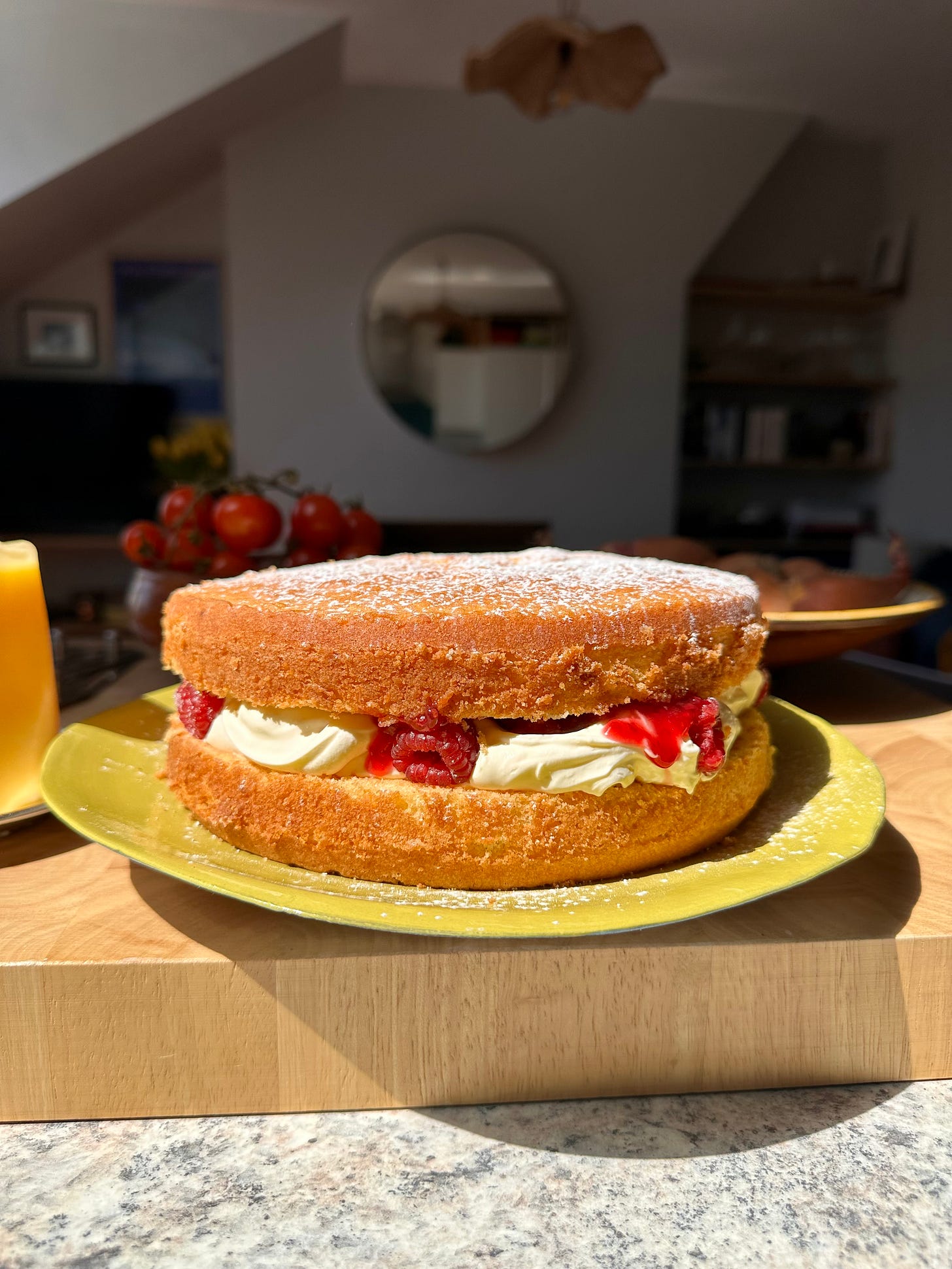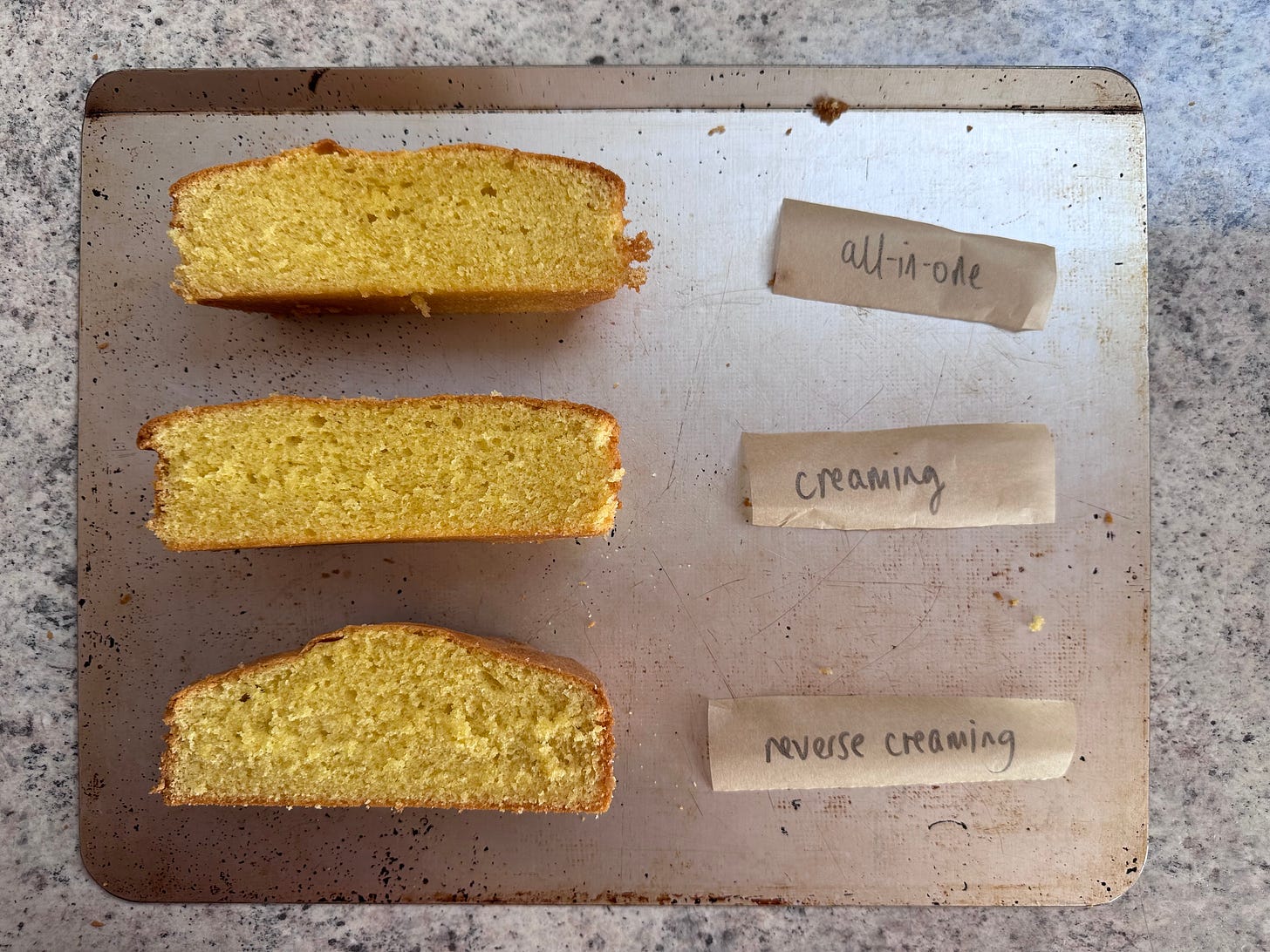Hello! Welcome to this 101 on the classic Victoria Sponge (this is a paid subscriber edition of the Small Wins newsletter). Each month I tackle a big topic in one go, so that you have these handy reference guides at your fingertips — e.g. on kitchen organisation, on principles for cooking pasta, on all the savoury ways to cook eggs and so on. Thank you for being here.
For some time I was confused about what kind of cook I was.
On the one hand, I like to get quite academic and scientific about food, keen to understand what the very best version of something might look like.
On the other hand, I can be kinda lazy — I don’t have huge amounts of patience for recipes that feel too faffy. Occasionally I’m happy to take on a longer, more complex cooking project, but on the whole my attention span has its limits.
Some recipe developers sit on the highly precise end of the spectrum — for example Nicola Lamb, Heston Blumenthal and Ixta Belfrage. They want to develop the best recipe ever, even if it requires additional steps/cost/time. Other recipe developers are focused on providing solutions for the time-poor and flustered amongst us: I’m thinking of
’s family-orientated one-tin wonders, ’s single-portion creations and the infamous 30-minute suppers of Jamie Oliver.Only in the last year or so have I realised where I sit on this spectrum: I am the one who wants to find the very best outcome possible for the least amount of effort.
It always comes back to balancing input and outcome for me, the sweet spot being developing (or highlighting!) a recipe that is 90% as good as the ‘perfect’ version but takes half the effort.
I thought it might be worthwhile to share this outlook, as it’s the ethos that runs through Small Wins and it certainly informs today’s 101 on the humble but majestic Victoria Sponge. Let’s get into it.
Love,
Alexina
P.S. Next month, it’s a 101 on fish cookery (from a former fishmonger — me!)
VICTORIA SPONGE 101
The Victoria sponge is the quintessential British cake: two light, golden sponges traditionally sandwiched together with a lick of raspberry jam.
It’s a cake that is at once impressive with its two layers, yet homely since it is left “naked” with no buttercream to adorn its top or sides.
If you Google “Victoria sponge recipe” the engine will return thousands of results, but the irony (and beauty!) of this particular cake is that you don’t need a recipe because — as you’re probably aware — the sponge is based on a ratio of 1:1:1:1. Said another way:
It’s equal parts butter + sugar + eggs + (self-raising) flour
You weigh your eggs then match the butter, sugar and flour quantities to that weight.
You could play around with these proportions in search of a “superior” sponge… but honestly, that feels unnecessary when it’s perfectly possible to make a fantastic Victoria sponge using this easy-to-remember formula.
I’ve found that the difference between a good Victoria sponge and a great one has less to do with tweaking the core formula and more with paying attention to some of the details — today’s 101 will guide you through those.
Here’s what to expect:
The best method for bringing the sponge together — I pit all-in-one vs creaming vs reverse creaming against each other, and one comes out resolutely on top
The “extra” touches that make all the difference
Some answers to some questions including does how much I spend on ingredients make any difference?!
A play-by-play of the classic Victoria sponge
A summary of the levers you can pull to tweak a Victoria sponge to your taste + a matrix of different Victoria Sponge flavour variations categorised according to taste (bitter/sour/sweet/salty/umami) — i.e. a Victoria sponge for every palate!
A recipe for a grown-up Victoria sponge with muscovado sponges, a caramelised white chocolate whipped ganache & tart raspberries
A footnote on what cake-making method to use when (it really does makes a difference!)
IT’S (ALMOST) ALL IN THE CREAMING
I’ve made Victoria sponge cakes using all the methods over the years:
All-in-one (as recommended by Dame Mary Berry herself)
Traditional creaming (where you whip the butter and sugar together until light and fluffy)
Reverse creaming (where you rub the butter into the dry ingredients first, as favoured by cake goddess Lili Vanilli)
In doing so, I have come to favour different methods for different types of cakes (more on which in the footnotes) but I had never tested these methods against each other in a robust, like-for-like way…
It was time.
I made three sponges to a classic recipe with the same ingredients, baked in the same tins and at the same temperature.
This is how they turned out:
Are you as surprised by the visible difference as I am??
Even tasting the raw batter (the best bit of cake-making, amiright?) there was a noticeable difference in flavour:






